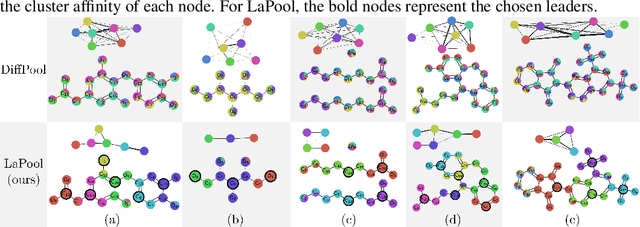Towards Interpretable Sparse Graph Representation Learning with Laplacian Pooling
Paper and Code
May 28, 2019



Recent work in graph neural networks (GNNs) has lead to improvements in molecular activity and property prediction tasks. However, GNNs lack interpretability as they fail to capture the relative importance of various molecular substructures due to the absence of efficient intermediate pooling steps for sparse graphs. To address this issue, we propose LaPool (Laplacian Pooling), a novel, data-driven, and interpretable graph pooling method that takes into account the node features and graph structure to improve molecular understanding. Inspired by theories in graph signal processing, LaPool performs a feature-driven hierarchical segmentation of molecules by selecting a set of centroid nodes from a graph as cluster representatives. It then learns a sparse assignment of remaining nodes into these clusters using an attention mechanism. We benchmark our model by showing that it outperforms recent graph pooling layers on molecular graph understanding and prediction tasks. We then demonstrate improved interpretability by identifying important molecular substructures and generating novel and valid molecules, with important applications in drug discovery and pharmacology.
 Add to Chrome
Add to Chrome Add to Firefox
Add to Firefox Add to Edge
Add to Edge